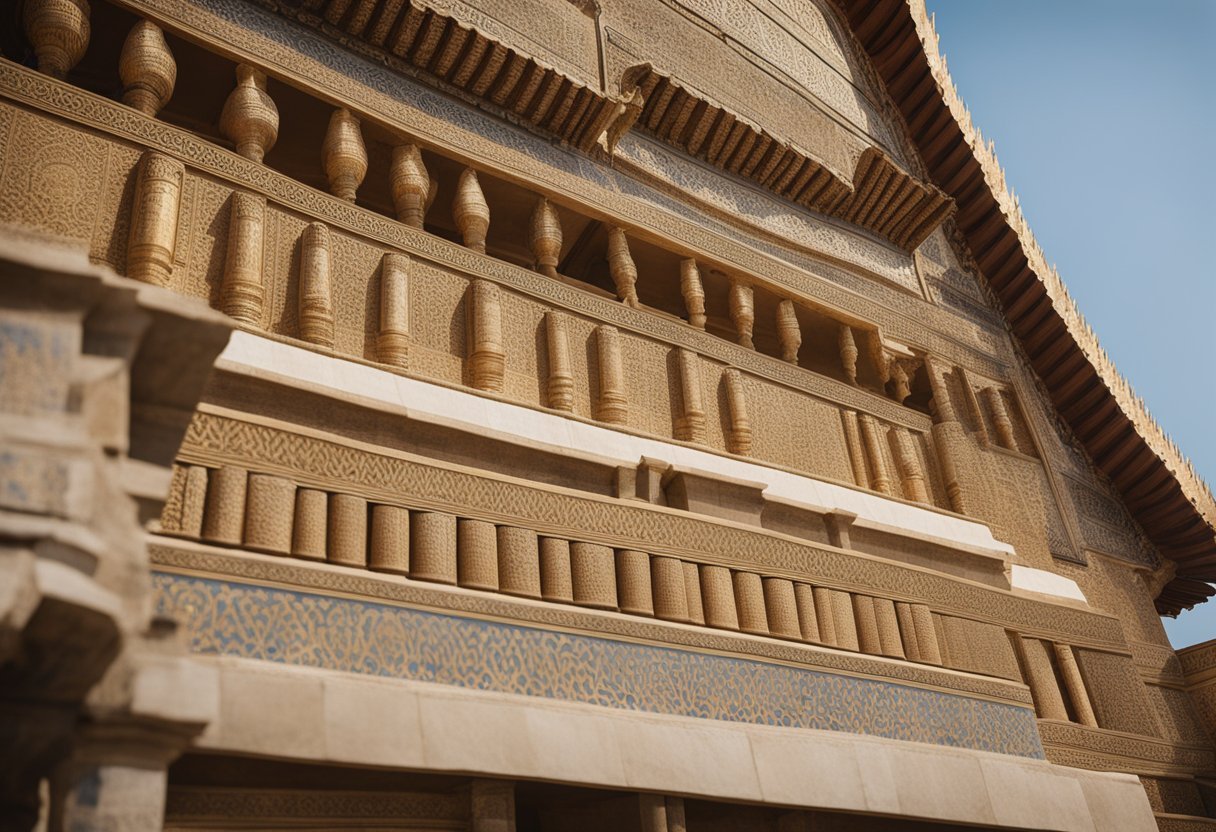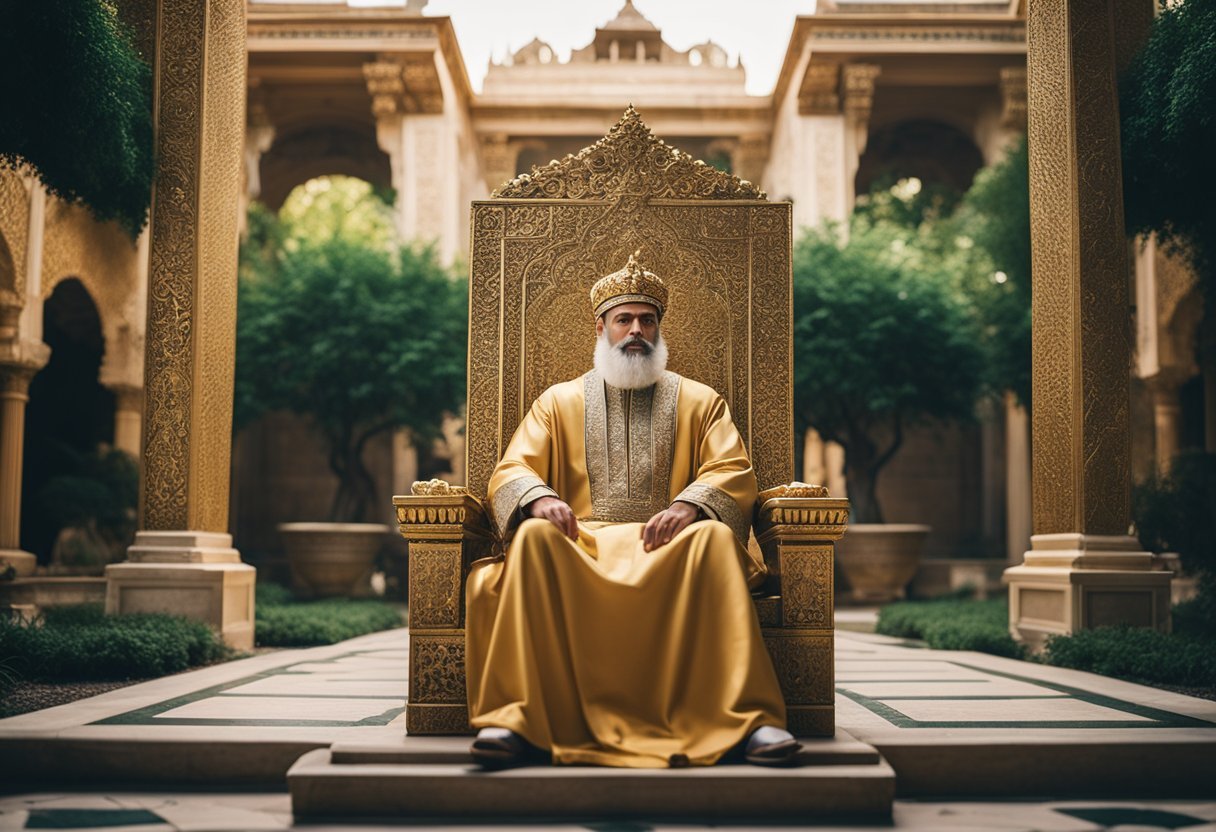Darius I, commonly known as Darius the Great, transformed the Achaemenid Empire into a well-organized and flourishing realm. His reign saw the Persian Empire reach its territorial peak, encompassing vast regions of Western Asia, parts of the Balkans, and even the Indus Valley. Darius’s administrative skills and ambitious building projects played a crucial role in solidifying the empire’s power and influence.
Born around 550 BCE, Darius was the son of Hystaspes, the satrap of Parthia. He came to power by overthrowing Bardiya, whom he declared an impostor. His vision extended beyond the conquest, as he established a complex administrative system, introduced standardized currencies, and constructed impressive structures like Persepolis. He even attempted to expand Persian dominance into Greece, although his campaigns there faced significant resistance.
Despite the setbacks in Greece, Darius’s legacy remains that of a visionary ruler who not only expanded the empire’s borders but also laid down the foundations for a prosperous and stable state. His reign is remembered for its remarkable combination of military conquests and innovative governance, leaving an indelible mark on history.
Rise to Power

Darius I’s early life laid the foundation for his eventual rise to power. His journey to ascend to the throne involved a series of strategic moves and alliances. Once in power, he focused on consolidating his control over the vast Persian Empire.
Early Life
Darius I was born around 550 BCE. He hailed from a noble family, being the son of Hystaspes, a prominent figure in the Persian court. Darius grew up surrounded by influential figures and military leaders, which significantly shaped his understanding of governance and strategy.
During his youth, Darius held various positions in the Persian military. His early exposure to military campaigns and administrative duties helped him develop a keen sense of leadership. This background prepared him well for the challenges he would later face.
Ascension to the Throne
Darius I ascended to the throne in 522 BCE during a tumultuous period. The Achaemenid Empire was in disarray following the death of Cambyses II and the short reign of Bardiya. Exploiting the chaos, Darius, with the support of six noble families, launched a coup.
The key moment was in October 522 BCE when Darius and his co-conspirators killed Bardiya, or an imposter posing as him. After eliminating his rival, Darius proclaimed himself king. To legitimize his claim, he fabricated a story that Bardiya was an impostor, which the nobles supported.
Consolidation of Power
Once crowned, Darius focused on securing his rule. He faced rebellions across the empire, from Babylon to Egypt. Overcoming these challenges required a combination of military prowess and diplomatic skill. Darius personally led campaigns to quash the uprisings and reassert control.
He reorganized the empire into satrapies, or provinces, to ensure efficient administration. Darius also built extensive road networks, including the famous Royal Road, to facilitate communication and trade. These efforts not only stabilized his reign but also strengthened the empire’s infrastructure.
Darius’s consolidation was marked by major building projects and legal reforms. The construction of the new capital at Persepolis showcased the empire’s wealth and power. These initiatives solidified his reputation as a formidable and effective ruler.
Legacy and Achievements

Darius I from Persia left a significant mark on history through his military campaigns, administrative reforms, building projects, and cultural impact. His contributions helped shape the Achaemenid Empire.
Military Campaigns
Darius I launched several notable military campaigns to secure and expand his empire. He attempted to conquer Greece multiple times but faced setbacks, including a storm in 492 BCE that destroyed his fleet and a defeat by the Athenians at Marathon in 490 BCE. Despite these failures, these efforts showcased his commitment to extending Persian influence.
He also successfully quelled revolts within the empire, ensuring stability. His military strategy combined direct confrontation and strategic diplomacy. This approach allowed him to maintain control over a vast and diverse empire.
Administrative Reforms
Darius I introduced several administrative reforms that greatly enhanced the efficiency of the Achaemenid Empire. He divided the empire into provinces called satrapies, each governed by a satrap. This system allowed him to manage vast territories more effectively and maintain control through local administration.
He also standardized weights, measures, and coinage, which facilitated trade and economic stability. His creation of an extensive road system, including the Royal Road, improved communication and commerce across the empire, promoting connectivity and unity among his subjects.
Building Projects
Darius I was renowned for his ambitious building projects. He commissioned the construction of Persepolis, a grand ceremonial capital that symbolized the empire’s power and prosperity. The city featured impressive palaces, audience halls, and intricate reliefs depicting various aspects of Persian life.
He also improved existing cities like Susa and Babylon. Darius prioritized monumental architecture and infrastructure projects, showcasing his vision for a unified and enduring empire. These constructions not only displayed his wealth and power but also served practical purposes, enhancing administrative efficiency and cultural cohesion.
Cultural Impact
Darius I had a significant cultural impact on the Achaemenid Empire. He promoted religious tolerance and allowed various peoples within his empire to maintain their own traditions and customs. This policy of tolerance helped to integrate diverse cultures and fostered loyalty among conquered regions.
He also encouraged the use of a common language, Aramaic, for administration, further unifying the empire. His contributions to culture included the creation of the Behistun Inscription, a multilingual inscription that provides valuable historical insights. Darius’s policies and projects left a lasting legacy on the cultural landscape of the Persian Empire.

